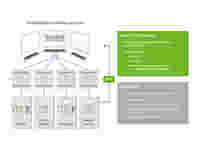Efficient System Integration Through Service-Oriented Software in Automation

Today, all data is already collected by the terabyte on many ships. However, the work of shipyards and system integrators is complicated by the ubiquitous requirement to create the conditions for data collection. They must synchronize systems from different manufacturers during commissioning.
The growing “hunger for data” associated with digitization's growth leads to ever greater interconnectedness, and thus to ever greater complexity. With DIMA (Decentralized Intelligence for Modular Applications), WAGO has developed a concept to increase efficiency in process engineering – and it has already been tested, and proven, on land. But can this method be adapted to maritime transport? And if so, how?


